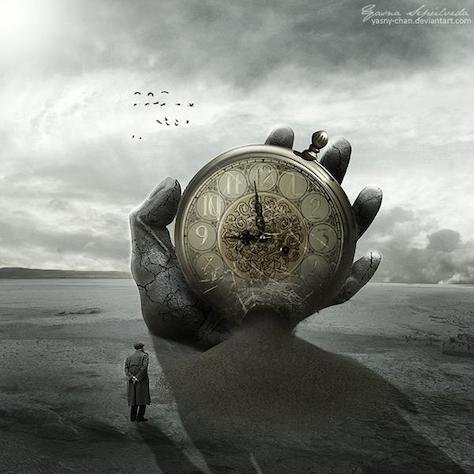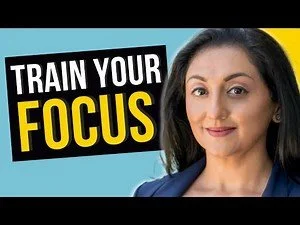How can we change our mindset around aging?
It’s hard not to imagine a ticking clock counting down the minutes when considering how long we’re going to live. Of all the ways we could engage with the time we have left. Of how and where we decide to spend our time and energy. Each life affirming breath is one breath closer to our last. I don’t mean to sound morbid. To the contrary.
Why do I want to write about aging and longevity? Seems appropriate. A natural progression after Mom's dying earlier this year. Slowly at the end, a fading away as she said. Her physical quality of life by all measures was poor. Her emotional quality of life by anyone who knew her was extremely high.
Mom maintained a positive outlook, she chose an optimistic mindset, and kept in contact with her vast extended family and friend network. Not many 90-year olds email their twenty grandchildren on a regular basis. Mom relied on so many others. She was both appreciative and humbled in her last decade.
My intention with each of these newsletters (exploring the nature of our thoughts and their entanglements) coaxes me deeper into unwinding my perceptions of how I want to live the rest of my life. At 65 and the eldest child, with the passing of Mom — what it means to age —is now front and center without the distraction and concerns over her well-being.
A discussion about longevity ignites a desire in the competitive part of me to stretch and lengthen my lifespan. But longevity’s not only about the challenge of hitting a targeted old-age goal. The remaining time we have left needs to include a quality of life to enjoy our life clause.
Longevity isn’t just about lifespan. It’s about healthspan too — the part of a person’s life where they are generally in good health; physically, mentally, and emotionally.
How can we each change our mindset around aging and choreograph a high quality of life to the end?
what is longevity?
Within the last couple of weeks I learned about a new concept reading Outlive: The Art and Science of Longevity by Dr. Peter Attia. The idea is to look at the last decade of your life and train for it. He calls it the Centenarian Decathlon.
The Centenarian Decathlon uses the concept of backcasting, looking back from your goals. The idea is to plan what you need to do now to prepare for that future. Although Dr. Peter spends most of his time on physical training and the positive ripple effect it has on our cognitive health, he does spend a good chunk on the emotional aspects affecting our quality of life. What good is being in great brain-body shape if you’re a wreck emotionally?
My lifestyle includes regular exercise, eating healthy. I get enough sleep. I meditate. I have a rich network of family and friends.
Can’t I keep on with the lifestyle I have?
The mindset shift for me as I read and absorbed the reality that despite all those positive lifestyle factors listed above, the physics of aging does a number on our bodies and minds. Unless we prepare to compensate.
Which begged the question: what do I want to be able to do in my last decade?
Again, not wanting to sound morbid. None of us knows when we are going to die. Ignoring any discussion of death and quality of life is a bit like crossing your fingers and hoping you have enough money for your retirement.
I remember years ago fidgeting a bit in our financial planner’s office across a large laminated wood-of-some-kind desk. I dragged my husband in to have a feasibility discussion around retirement. He wasn’t ready and didn’t think we could. He checked his phone a lot and teased our financial planner about his red tie and not dressing down on Fridays.
Since my strokes, the question of what else could I be doing with my time and when’s enough enough echoed persistently.
My company was going through the fifth or sixth merger and acquisition cycle since my joining in the 1980s. Like kids shuffled between corporate foster families while up for adoption, we waited for our new parents and business cards. I was part of the original broadcast manufacturing family that splintered and broke-up with each merger or acquisition. Many peers becoming free-agents I later ran into at trade shows and still send holiday cards to.
At that large laminated wood-of-some-kind desk across from our well-dressed financial planner, his eyes ping-ponged silently between the two of us. He followed our conversation back-and-forth as we worked through the question: how long do you think you're going to live?
Our financial planner waited patiently. I’m sure this wasn’t the first time couples didn’t come to the meeting having worked out their answers ahead of time. We couldn’t have a realistic discussion unless we knew how long we needed to plan for.
Red-tie's eyes ping-ponged silently between us, waiting …
"One-hundred.” I blurted out. Optimistically. Cheerfully with a smile of confident certainty.
Why can't I? Aunt Sadie lived to 101. This was decades before Mom died so I didn’t have that personal data point, but she lived to 91 and I’m in better shape than she was, past strokes aside.
Next to me, my husband paused.
“Don't you tell me how long I'm going to live." He said. Part teasing, part schooling me to not answer for him as Aunt Sadie would say.
Either way I felt my stomach clench – not in front of red-tie financial advisor …
I took a breath.
“How long … do you think you're gonna live?" I asked.
My husband took another beat.
Our financial advisor and my eyes were all four waiting for my husband to share his answer.
When he’s processing, his eyebrows pull in ever so slightly, in a serious, thoughtful working-it-out way. His eyebrows are his version of the webpage hourglass icon, communicating processing.
“Eighty-eight.” My husband said.
Red-tie ran the Monty Carlo scenarios financial planners run to hone in on our probable success rate. We passed. I asked him to run it again with my husband living into his 90s too.
***
From Dr. Peter’s book, here’s a sample Centenarian Decathlon list. They weren’t what I expected.
Hike 1.5 miles on a hilly trail.
Get up off the floor under your own power, using a maximum of one arm for support.
Pick up a young child from the floor.
Carry two five-pound bags of groceries for five blocks.
Lift a twenty-pound suitcase into the overhead compartment of a plane.
Balance on one leg for thirty seconds, eyes open. (Bonus points: eyes closed, fifteen seconds.)
Have sex. [I’ll add intimacy is as important.]
Climb four flights of stairs in three minutes.
Open a jar.
Do thirty consecutive jump-rope skips.
Open a jar? Mom asked stockers at the grocery story to open jars because she wasn’t strong enough to do it at home.
Carry grocery bags? Mom had aides do her grocery shopping for her.
Get up off the floor?
Even rereading this list now, I can’t get an image of Mom out of my head. My husband and I were visiting Mom. We stayed in our little Airstream in her driveway. Mom had recently returned from rehab after a fall. She’d agreed to overnight care for a week or so until she was back into her routine.
Mom was going to cancel the overnight shift while we were there. I insisted that we were there to see how things went with the new aides. We all live thousands of miles away and wanted to know she’s safe and needed some transition time to continue to build her strength to prevent future falls.
About 4:30am I woke up to red flashing emergency lights reflecting off the silver Airstream walls. I knew it was the fire department. And they were there for Mom.
We hurried into the family room where she slept on a recliner. There were four or five muscular firemen and one woman. The paramedic was standing over Mom who was still sitting on the floor. Her hearing aids were out. She spoke to me because she knew I could understand her.
“Guess you girls were right.” Mom smiled up at me sitting like a four-year-old with her legs stretched out. Hard not to smile back.
Mom had gotten up to go to the bathroom and her legs became so weak she knew she was going to fall even with the walker. She called out to the aide who was sleeping upstairs through the baby monitor. Once the aide helped her gently down they tried calling me. My phone was on do not disturb. They called 9-1-1.
Chatting with the firemen Mom recognized by face if not by name because they’d been to her house so many times. She was on the once-a-month plan. She did love her muscular firemen.
Mom relayed she was fine. Didn’t hit her head. Just weak. Wanted help back into her chair.
But the paramedics insisted she go to the hospital to get checked out. I met her there and we hung out in the ER waiting for labs and the doctor. When I checked her MyChart, I saw her COVID test results. They’d come back POSITIVE. We’d later find out she caught it on the last day at rehab a week ago from an aide who tested positive after her last PT appointment with Mom. That’s why she was so weak.
Mom was taken to the COVID floor until she would test negative. Or a rehab place would accept COVID positive patients. She’d stay for another month trying to regain enough of her strength and stability to return home.
Mom commented many times in the final years how even when she was able to start exercising (light weights, walks around the kitchen island and pool table) she never felt she got as strong as before she fell. With each fall and rehab cycle, she got weaker. Her sense of humor stronger, but her body weaker.
What do I want to be able to do in my last decade?
Walk a mile with our grandkids as I approach 100. I know it doesn’t sound like a lot, but I was unaware of how much muscle mass one loses, until I think back to Mom. As we age, I had no idea how much more we have to put into exercise and eating to maintain where we’re at now.
How many miles do I have to be comfortably walking now at 65 to be able to walk a mile at 90? My optimistic attitude, my positive thinking mindset goes a long way, but I also need to weave in some biology and science to make it happen.
My “being healthy” mantra is necessary but not sufficient.
I need a plan…
how can we improve our longevity?
In the world of longevity, it doesn’t take much Googling or AI ChatGPT searching to see how medicine has allowed us to live longer, but what about our quality of life? Dr. Peter refers to Medicine 2.0 spurring the medical community to help people live longer, but reactively introducing pharmaceuticals and surgery interventions versus taking into consideration their quality of life.
With Medicine 3.0 Dr. Peter lobbies for the medical community to embrace being proactive and encouraging their patients to do a deep dive into how long they want to live and what do they want to be doing in their last decade. Then treat those goals in health physically, cognitively, and emotionally as something they train for.
By all standards my mother living until 91 adds a plus sign in my family legacy column. But physically her quality of life was nothing to strive for.
What do I want to be able to do in my last decade?
Strong enough to lift grandbabies out of their cribs or off the floor.
Flexible enough to play on the ground with them.
Go for walks. Lots of walks with my husband and friends.
Enjoy date nights.
Cook and shop for family and friends.
Spend time with creative outlets like writing.
Hike. It's not as if I wanna climb Mount Everest, but a 3-5 mile hike up Angels Rest or Dog Mountain in the Oregon Gorge for the rest of my 60s and 70s; 80s might only be Angels Rest.
When I trained for Oregon’s Hood to Coast, speed walkers ran in team segments from Portland to Seaside. Runners started at Mt. Hood. My goal was to be with the speed-walkers. Each segment was no more than 5 miles, but we all trained for 8 to 10 miles so that 5 miles didn’t seem like a big deal.
As I read the book, I realized I’ve injured my knee twice in last three months for silly reasons. The first time I missed a Mother’s Day hike with my three girls at the beach. We had a wonderful brunch, but I really wanted to do that hike. I’d started run/jogging in the neighborhood after all the traveling for selling Mom’s house after the funeral and I miscalculated stepping down from a steeper curb. I felt a twinge and thought if that hurts later I know when it happened. Then I kept going. Took me a month to be able to run/jog again. My husband encouraged me to use the treadmill. I wanted to be outside.
So what’s it going to take? What do I have to do now in my 60s to be able to walk a mile with our grandkids and hopefully my husband into our 90s?
According to Dr. Peter by far the most potent contribution to lifespan and healthspan is exercise: cardio, strength, and stability. I’ve known about the triad for decades; always thought flexibility was the third, but now understand from a goals perspective into my 90s that stability encompasses flexibility.
From personal experience, after my strokes I researched how to bring my BP down and far and away cardio was my silver bullet. Yes, I started on meds at the hospital and it took three years to wean off of them with my doctor’s support, but cardio more than any other exercise routine had the strongest direct impact.
For me, to walk a mile with our grandkids toward my 100th birthday is going to take continued: cardio, strength, and stability training. I started using the treadmill (good advice I didn’t want to take) and slowly building up my cardio time. I’ll be focusing more on form with strength and stability training. Probably dusting off my color-coded spreadsheets from post-stroke exercise tracking too.
The good news is even if people are not exercising much at whatever age, adding some exercise has a tremendous impact on our overall lifespan and more importantly our overall healthspan.
What if we shift our mindset and reframe why we are exercising in the first place?
“Exercise — I consider to be by far the most potent … impact on both lifespan and healthspan.”
—Dr. Peter Attia
Outlive: The Science & Art of Longevity
by Dr. Peter Attia
A groundbreaking manifesto on living better and longer that challenges the conventional medical thinking on aging and reveals a new approach to preventing chronic disease and extending long-term health, from a visionary physician and leading longevity expert.
how can we affect our brain’s longevity?
Our brains are powerful pieces of our anatomy. They hold much of who we intuitively perceive as “me” and we each probably want to keep that sense of “me” around as long as we live. Keep our river of thoughts flowing.
Turns out both exercise and mindfulness are ways to boost our mood and memory — and protect our brains against neurodegenerative diseases like Alzheimer's.
Mom may have been failing physically. And yes, cognitively there were memory issues, but she was 91. Her ability to remember what was going on in people’s lives was pretty amazing. And I don’t think she was adding notes to her iPad Contacts file.
Mom may not have done heavy exercising, but she had a routine. She walked around the kitchen island and into the game room and did laps around the pool table. She stopped periodically to work on a whatever large puzzle was spread out on the pool table. Often a giant one of her growing family. Mom’s 3# purple weights by her recliner at the ready to do her exercises when PT came.
According to Dr. Wendy Suzuki even a walk around the block or a 10-minute online workout will not only improve your day but also benefit your brain in a lasting way. Dr. Wendy is dean of the College of Arts and Science at New York University and professor of neural science and psychology. She studies the neurological impacts of exercise.
As Dr. Wendy explains, “Every time we work out you’re giving your brain a neurochemical bubble bath, and these regular bubble baths can also help protect your brain in the long term from conditions like Alzheimer’s and dementia.” Love the image of a brain bubble bath.
If you’re looking for some inspiration on how to weave exercise into your daily routine. Check our Dr. Wendy’s advice. Think of exercise and any movement as part of your daily routine for caring for your body, like brushing your teeth. Power vacuuming or taking the stairs all add up. She referred to exercise as a supercharged 401K for your brain.
“Exercising … literally builds brand new brain cells.”
— Dr. Wendy Suzuki
The brain-changing benefits of exercise
Dr. Wendy Susuki’s Ted Talk
What's the most transformative thing that you can do for your brain today? Exercise! says neuroscientist Wendy Suzuki. Get inspired to go to the gym as Suzuki discusses the science of how working out boosts your mood and memory -- and protects your brain against neurodegenerative diseases like Alzheimer's.
Another way to help nourish our brains is through mindfulness. With all our daily distractions, it’s easy to get caught up in reactive mode as if we’re playing whack-a-mole through our day. There’s a cadence we fall into where we’re not fully present with the people we love because our brains are in reactive mode and it’s hard to concentrate for too long. Or, we keep forgetting things because we’re juggling too much or switching too often that we lose track of what we were doing.
Dr. Amishi Jha, a neuroscientist with a laboratory at the University of Miami, has researched why our attention fails us. In her book Peak Mind: Find Your Focus, Own Your Attention, Invest 12 Minutes a Day she shares how our brains can be trained for greater focus and less distractability.
My meditation routine has hovered in a 20 minute sweet-spot. Yet through her research, she’s found that as little as 12 minutes a day brings tremendous benefits. Her book gives you practical steps in how to achieve a more mindful state that lasts long after you’ve finished.
If you’re open to experimenting with ways to improve your attention even in stressful situations, listen to her Ted Talk and give her ideas a try. She shares several types of mindfulness meditation: flashlight, body scan, and river of thought. Over a 4-week schedule she not only offers guidelines for each type of meditation, but also: what to expect each week, frequently experienced challenges, what success looks like (hint, just sitting there for 12-minutes), and most importantly how that week’s skill will show up in your life.
Here’s an excerpt from Week 2 when learning to incorporate the body scan:
“Whenever anything happens — at work, at home, wherever you are — there’s a whole constellation of sensations that show up in the body. Stress, anxiety, elation, fear, sadness, excitement — they each have associated physical sensations. You’ll be noticing this more and more. This means you can take action as your tap into those sensations.”
For me, I now notice the little aches in my knee when I’m on the treadmill so I pull back on the speed or incline to finish the workout versus pushing through it which hasn’t gotten the results I wanted in the past. And I’m hoping if you ask my husband, he’ll say I’m more present when he’s sharing his day.
“By reclaiming our own attention, we can more fully connect with the people who matter to us.”
—Dr. Amishi Jha
Train Your Focus in 12 Minutes
Jim Kwok & Dr. Amishi Jha
Neuroscientist, Dr. Amishi Jha shares insights about how to use mindfulness training to regain your ability to be present in any situation — in only 12 minutes a day.
why is aging gracefully important?
At any one time, if I listen, I’m hearing echoes from my past while planting new thought echo seeds into my future. Longevity is my underlying Energizer Bunny. Keep breathing and moving; my life's breath of persistence and resistance into my 90s like Mom and Aunt Sadie. Our thought echoes will last as long as our longevity does. They may crash about a bit as they elongate with age.
For me, longevity is my tide. Thought echoes my wind. Together they make up my weather. Patterns of storms and quiet, calm waters. Longevity teaches me to see the long game. Thought echoes are the whispers to keep me company and encourage me on.
Longevity strengthens my resolve for taking steps to improve my health versus taking it for granted. Longevity is a gift to pass on to our daughters and grandbabies.
Thought echoes ripple. Longevity hums, a persistent, underlying always on heartbeat keeping rhythm to my internal clock. The tick-tock of my heartbeat. The wind of my thoughts blowing the mechanisms; aways present.
When I sleep, my thoughts are freer to kibitz with each other. To share their generational perspectives. To role-play what ifs. There are lots of characters on the stage of my mind. When the playwright and director are offset. And sometimes echoes of Mom pop up in there too.
We're all gonna die. Most of us slowly versus from an acute injury like a car accident. Wouldn't it be nice to have a soft landing? Not a disappearance cognitively, or a shut down of physical capabilities. More a gliding than a conking out like a car stalling and not being able to move without being towed to a shop for repair (like going to rehab).
As Mom was actively dying, we stood over her hospital bed reminiscing about all she had left us, the modeling of a life well-lived with so many people who loved and were loved by her. Yes, there were lessons learned on how not to do something, but don’t we all have that impact on others?
My sisters had gathered photos and memorabilia to surround Mom’s unconscious body as her five daughters spread out and took overnight shifts. Who knows how much she could hear or sense we were there. I remember one time we whispered something I don’t remember, but there was a glancing over my shoulder not knowing if she could hear us like we were sharing secrets of things we did in high school we didn’t want to get yelled at about. As if she’d do anything other than laugh and say, “I didn’t know THAT!”
Mom’s goal was to remain in the house she and Dad built in the late 1960s until she died. Her goal was independence (that and getting everyone she ever met into Heaven). She was very persistent on both counts.
I’m reminded of David Brooks’ short Ted Talk: “Should you live for your résumé or your eulogy?” He discusses “how we each have two selves: the self who craves success, who builds a résumé, and the self who seeks connection, community, love -- the values that make for a great eulogy.”
Mom stopped building a traditional resume more than a half-century ago, but the self that craves connection, community, and love was her jam.
Mom’s left a legacy of her creating a community of people she prayed for every day. I mean every day — except maybe that last week. This included people who were kind to her or not. When Mom met one of our niece’s new boyfriend she told him that Mom was going to pray for him every day. “You don’t understand. Grandmama is going to pray for you every day. REALLY!” I wonder where she kept all those names, maybe in one of her stenographer notebooks where she made all her lists.
Mom’s legacy echoes through everyone she ever met. We can only hope to have that kind of impact when we die.
In many ways, thought echoes are what keep us up at night. Those persistent, recurring thoughts. How can I change my mindset around what it means to age was one for me.
What thought echoes keep you up at night? What thought echoes will you have rippling into your 90s?
LEAVE YOUR COMMENTS BELOW.
What did you discover were your top 5 signature strengths? How can you apply them to in your life?
Please leave a comment below and if you enjoyed this post, I invite you to subscribe to my thought echoes newsletter.







